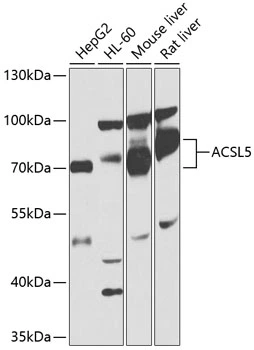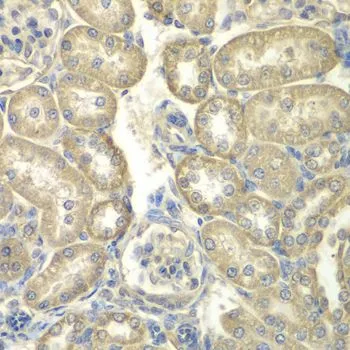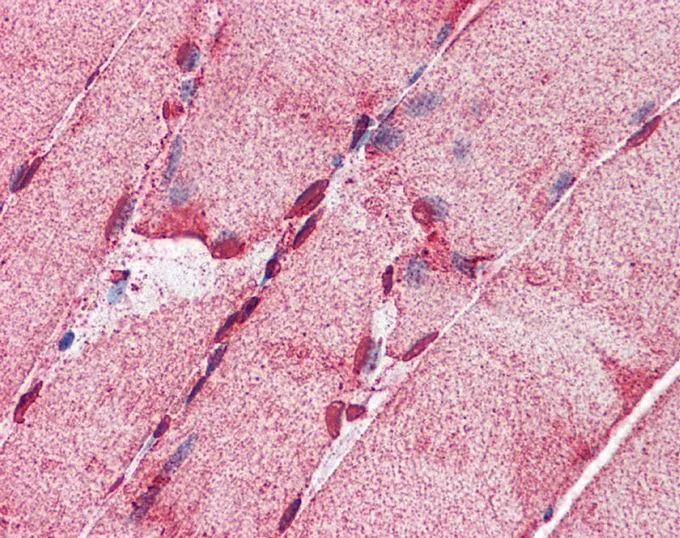
WB analysis of various sample lysates using GTX30019 ACSL5 antibody. Dilution : 1:1000 Loading : 25microg per lane
ACSL5 antibody
GTX30019
ApplicationsWestern Blot, ImmunoHistoChemistry, ImmunoHistoChemistry Paraffin
Product group Antibodies
ReactivityHuman, Mouse, Rat
TargetACSL5
Overview
- SupplierGeneTex
- Product NameACSL5 antibody
- Delivery Days Customer7
- Application Supplier NoteWB: 1:500 - 1:2000. IHC-P: 1:20 - 1:100. *Optimal dilutions/concentrations should be determined by the researcher.Not tested in other applications.
- ApplicationsWestern Blot, ImmunoHistoChemistry, ImmunoHistoChemistry Paraffin
- CertificationResearch Use Only
- ClonalityPolyclonal
- ConjugateUnconjugated
- Gene ID51703
- Target nameACSL5
- Target descriptionacyl-CoA synthetase long chain family member 5
- Target synonymsACS2, ACS5, DIAR13, FACL5, long-chain-fatty-acid--CoA ligase 5, FACL5 for fatty acid coenzyme A ligase 5, LACS 5, arachidonate--CoA ligase, fatty acid coenzyme A ligase 5, fatty-acid-Coenzyme A ligase, long-chain 5, long-chain acyl-CoA synthetase 5, long-chain fatty acid coenzyme A ligase 5
- HostRabbit
- IsotypeIgG
- Protein IDQ9ULC5
- Protein NameLong-chain-fatty-acid--CoA ligase 5
- Scientific DescriptionThe protein encoded by this gene is an isozyme of the long-chain fatty-acid-coenzyme A ligase family. Although differing in substrate specificity, subcellular localization, and tissue distribution, all isozymes of this family convert free long-chain fatty acids into fatty acyl-CoA esters, and thereby play a key role in lipid biosynthesis and fatty acid degradation. This isozyme is highly expressed in uterus and spleen, and in trace amounts in normal brain, but has markedly increased levels in malignant gliomas. This gene functions in mediating fatty acid-induced glioma cell growth. Three transcript variants encoding two different isoforms have been found for this gene. [provided by RefSeq, Jul 2008]
- ReactivityHuman, Mouse, Rat
- Storage Instruction-20°C or -80°C,2°C to 8°C
- UNSPSC12352203






